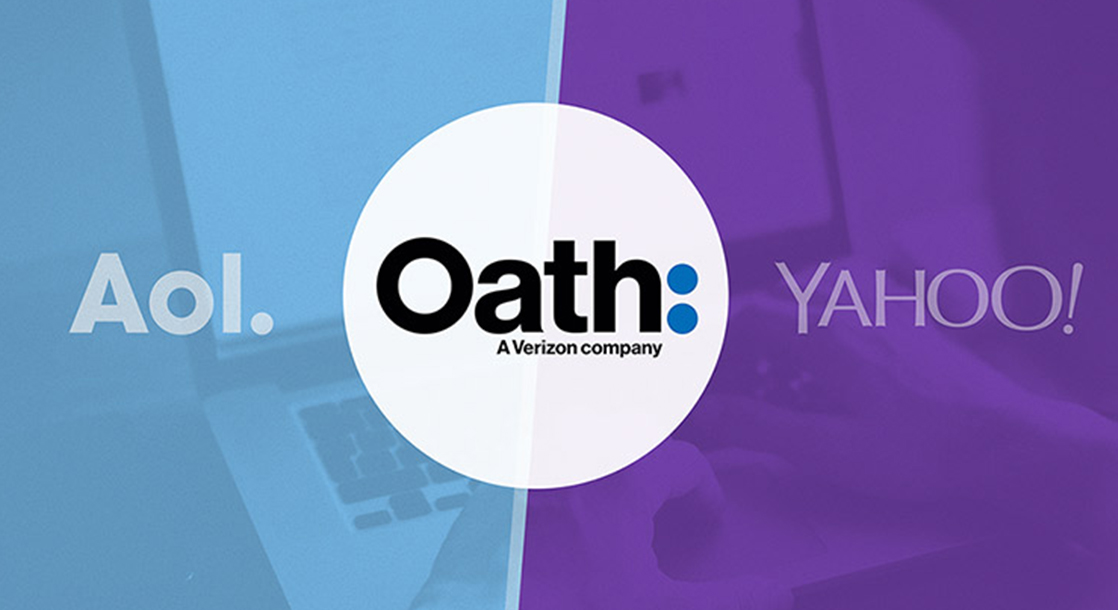This week, Yahoo and AOL announced Oath, their newly-merged mega-company. The new name, widely mocked by tech writers across the internet, is just the latest in a long line of embarrassing moments for the two former digital giants. In the years since their heyday, both companies have made one misstep after another, going from mighty tech titans to footnotes in our collective web history. While Google and Apple have changed with the times, finding new products to thrust them forward into the next era of the Internet, Yahoo and AOL have continued to stumble. And while picking the name Oath — a rebrand that almost makes TRONC sound clever — is the most recent foible of these companies, there are plenty more embarrassing moments from each throughout the past two decades.
Yahoo Doesn’t Buy Google…Twice (1997)
It sounds insane today, but Yahoo turned down the option to buy Google for $1 million in 1997. That looked like a bargain five years later, when Yahoo tried to purchase the company for $3 billion. By then, the multi-billion dollar horse had left the barn. Industry experts estimated that the company was worth at least $5 billion during that second bid, but Terry Semel, then-CEO of Yahoo, wouldn’t pay the price. Shortly after, $5 billion would also look like a bargain, and Yahoo would be a two-time loser.
AOL-Time Warner Merger (2001)
Though Oath will likely fail, it probably won’t match the historically terrible merger of AOL and Time Warner. Back at the turn of the twenty-first century, at the height of AOL’s powers, the company acquired cable giant Time Warner for $164 billion, and the acquisition almost immediately led to losses, with $99 billion down the drain in 2002. By the time the partnership came to an end in 2010, AOL was a small sliver of Time Warner’s business. At the time, critics of the merger made comments like, “in order to deserve business and financial support, you should be doing something valuable and legitimate and not something else." Hard to get harsher criticism than that, but the same opinion could be applied to Oath and it would still be right on the money.
AOL Has No Answer for Broadband (2003)
A few short years after their merger with Time Warner, AOL was already looking back fondly on its golden age. The dial-up provider was being beaten quarter after quarter by faster broadband providers, and it had no answer as to why. Though the company had broadband services, they couldn’t sell them as a faster version of their dial-up service, and frustrated customers left in droves. AOL was forced to try and sell customers their broadband as an add-on to cable and phone packages from companies that already provided broadband services.
The New York Times’ Saul Hansell chronicled the company’s fall from grace, painful moment after painful moment. AOL tried to pour marketing cash into their inferior version of broadband to no avail, culminating in a massive rebrand that looked tacky to customers at the dawn of the Iraq War. By 2004, when the company finally put all of its tech efforts into broadband, it was too late. By 2005, the company has moved away from their original business as an ISP.
AOL Tosses Their Rest of Their Cash Down A Portal (2005-2007)
After suffering a massive defeat in the broadband space, AOL pivoted to developing their web portal, which also proved to be a terrible decision. A decade ago, there was a time when homepages were more than homepages; they were your launching point to the web. News headlines, sports sites, and online shopping were all accessed from your “web portal,” which we would now recognize today as a homepage with some additional bells and whistles. AOL believed that they could attract tens of millions of users to their portal, creating cross-pollination between their services like Instant Messenger and MapQuest. Of course, we know today that expecting a customer to use one app or website just because they use another of your products is insane, but AOL were the people that painfully proved this to us. By 2007, this initiative was abandoned, over 1,000 employees were laid off, and AOL was reduced to focusing on a business of selling ads on other companies’ websites. During this time, one of AOL’s main competitors was, you guessed it, Yahoo, who also dumped hundreds of millions of dollars down a web portal money pit.
Massive Yahoo Data Breach (2013-2014)
In December of last year, as Verizon was preparing to acquire Yahoo, it was revealed that over 1 billion people had been affected by a massive data breach between 2013 and 2014. While companies like Facebook and Google started to take security more seriously, Yahoo had seen it as an area to cut costs. Yet again, Yahoo looked like an out-of-touch Internet dinosaur, and Verizon revisited its already-low $4.8 billion acquisition, shaving $250 million more off of the company’s bid.
Yahoo’s Bad Acquisitions (2012-2016)
Web portals failed and both AOL and Yahoo struggled to adapt to the rise of smartphones and social media. Both sites made acquisitions to try and save themselves. Though Yahoo was making acquisitions long before CEO Marissa Mayer arrived at Yahoo, Mayer oversaw one of the worst series of buyouts in tech history. Of the 53 acquisitions she made, 41 of the companies totally shut down. Many of the acquisitions were designed to gut the company, but the industry consensus is that this strategy was an overwhelming failure. Most of the companies that did survive, like Tumblr, suffered huge dips following acquisition, sometimes losing over 50% of their value.
So best of luck to Oath — don't make any promises you can't keep! That said, we aren't expecting much.











